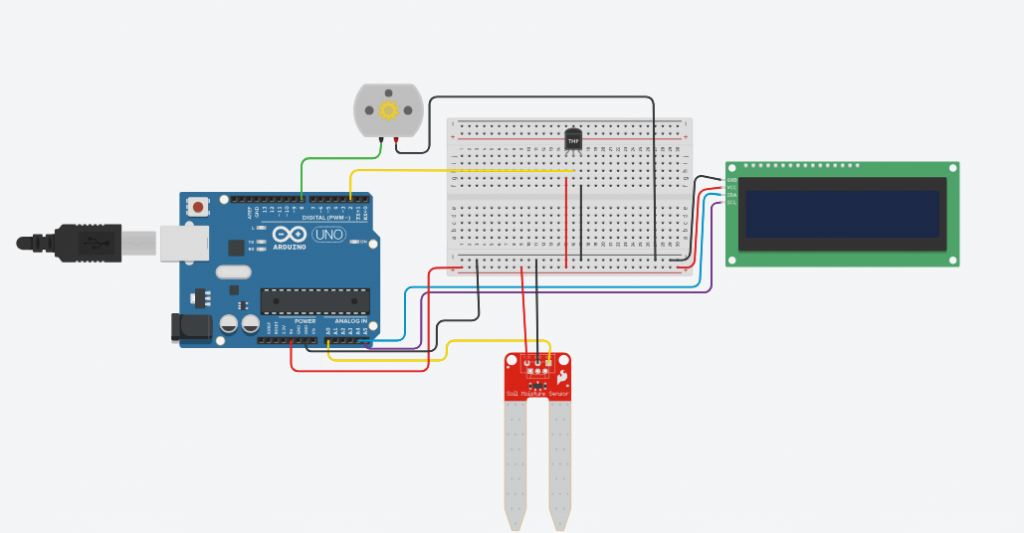INTRODUCTION:
An automatic irrigation system employs sensors to continuously monitor environmental conditions and soil moisture levels, activating irrigation only when it is truly needed. This intelligent approach optimizes water usage, ensuring plants receive the precise amount of hydration required for healthy growth. The core components of the system include an Arduino microcontroller, a soil moisture sensor, a humidity sensor, a relay module, and a water pump, all working together seamlessly to deliver efficient and timely watering.
Components and Their Functions
Arduino Uno:
Function: Serves as the central processing unit of the system, reading data from sensors and controlling the water pump.
Working: It processes input signals from the soil moisture and humidity sensors, then activates or deactivates the relay module according to predefined moisture and environmental thresholds.
Soil Moisture Sensor (e.g., Capacitive or Resistive):
Function: Measures the moisture content in the soil.
Working: It outputs an analog or digital signal proportional to the soil’s moisture level. The Arduino reads this signal to determine whether the soil is dry or sufficiently moist.
Humidity Sensor (e.g., DHT11 or DHT22):
Function: Measures ambient humidity and temperature.
Working: Sends digital data to the Arduino, providing real-time environmental information to complement soil moisture readings.
Relay Module:
Function: Acts as an electrically controlled switch to manage the water pump based on Arduino commands.
Working: When triggered by the Arduino, it closes the circuit, allowing current to flow and powering the water pump.
Water Pump:
Function: Delivers water to the irrigation system.
Working: Operates when the relay closes the circuit, pumping water to the plants until adequate moisture levels are restored.
Power Supply:
Function: Provides electrical power to the Arduino, sensors, relay module, and water pump.
Working: Typically includes USB power for the Arduino and an external power source (battery or adapter) for the pump.
Connecting Wires:
Function: Facilitate electrical connections between components.
Working: Transmit power and signal data throughout the system.
Breadboard (optional):
Function: Enables prototyping and temporary connections without soldering.
Working: Simplifies circuit assembly and testing.
Working Description of the Automatic Irrigation System
Initialization:
The Arduino initializes all sensors and configures input/output pins. The soil moisture and humidity sensors start monitoring environmental conditions continuously.
Data Collection:
The soil moisture sensor measures the soil’s moisture level and sends an analog or digital signal to the Arduino. Simultaneously, the humidity sensor provides ambient humidity and temperature data.
Decision Making:
The Arduino processes the sensor inputs. If the soil moisture falls below a preset threshold-indicating dry soil-and the ambient humidity is also low, the Arduino determines that irrigation is necessary. If moisture levels are adequate, the system remains inactive.
Irrigation Activation:
Upon detecting dry soil and low humidity, the Arduino sends a signal to the relay module to close the circuit. This activates the water pump, which irrigates the plants.
Irrigation Control:
The pump continues watering until the soil moisture sensor detects that moisture levels have risen above the threshold. At this point, the Arduino signals the relay to open the circuit, turning off the pump.
This automated loop ensures efficient water usage by delivering water only when needed, preventing overwatering and conserving resources. The system’s modular design allows customization of moisture thresholds to suit different plant species and environmental conditions, making it adaptable for various agricultural and gardening applications.
This description reflects a comprehensive, efficient, and user-friendly automatic irrigation system based on Arduino technology, optimizing plant care through precise environmental monitoring and control

